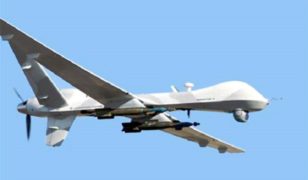Pentagon industrial base official promotes R&D spending now, as seeds for a better future

About one month before President Obama unveils his administration’s fiscal year 2015 budget request, a key DoD industrial base official told a conference in New York City that the Pentagon hopes that “Congress has lost its appetite for sequestration.”
Elana Broitman, the acting deputy assistant secretary of defense for manufacturing and industrial base policy, told an audience of defense, aerospace and financial executives at a Cowen and Company conference, that she believes the Defense Department has reached the nadir of its budget woes, and that things may be looking up from here.
To underline the point, she noted the recent “Murray-Ryan deal” — the bi-partisan budget agreement hammered out by Senator Patty Murray (D-WA) and Rep. Paul Ryan (R-MI) — which allowed the fiscal year 2014 spending plan to escape Capitol Hill and make its way to the Oval Office for the president’s signature. In that government-wide spending package, the Pentagon was funded an extra $30 billion, said Broitman, and she indicated that the Pentagon is hoping to recover additional billions as part of the president’s forthcoming FY2015 request.
At the same time, she acknowledged that the country — and the Congress — are hardly in a mood to spend generously on defense programs, due in large part to “war weariness” brought on by a decade of wars in Iraq and Afghanistan. Consequently, accurate figures for future defense spending are hard to predict. “We have absolutely no certainty,” she admitted.
Broitman recommended that when the FY2015 budget dollars begin to flow, a healthy chunk of that money ought to be set aside for R&D programs, in order to enable the United States to maintain its historic “innovative edge.” R&D programs across the board at DoD — at all stages of their lifespans — have taken a hit in recent years, and these cutbacks inevitably have serious consequences.
“What worries us is we don’t have a pipeline of new products,” Broitman observed.
She recalled the days in the post-Vietnam War era of the late 1970s, when DoD budgets were being slashed. William Perry, then a top DoD research and development official, and later a secretary of defense, argued successfully for the importance of maintaining a pipeline of innovative new R&D programs. By the time the budget pendulum had swung back toward stronger and stronger defense budgets in the 1980s, under President Ronald Reagan, the R&D efforts promoted years earlier by Bill Perry had matured into full-fledged systems ready for procurement. This progression, Broitman noted, led to major weapons programs, such as the Abrams tank, Bradley infantry fighting vehicle, Apache helicopter, Patriot surface-to-air missile, as well as Navy destroyers and cruisers, and a host of others.
“These seeds were planted during a much leaner time,” she told her audience.
An emphasis on R&D efforts is not only good for innovation and good for the U.S. industrial base, said Broitman, but vitally important to counter serious strategic moves being made by China and Russia.
“China and Russia are innovating in ways we need to address,” she declared. China has visibly tripled its R&D investments, she said, “and there might be lots we don’t know about.” As a result, China is making real progress in some of its fighter, missile and space programs, she reported.
“We cannot be resting on the laurels of our past innovations,” Broitman added.
As one of the Pentagon’s top officials responsible for the health of the nation’s defense industrial base, she sees both the positives and the negatives on the horizon. On the positive side, Broitman acknowledges that the U.S. market for defense products are services is still the largest in the world, and still offers a target-rich environment for defense and aerospace suppliers. “About $1 billion per day goes to industry,” she told her audience of business people.
On the other hand, recent sequestration-driven belt-tightening have put pressure on many mid-sized contractors, she observed, and “we’re seeing a great deal of leverage.”
Her office — and her Pentagon colleagues — do not want to see the defense industrial base wither on the vine. “We’re really watching the industrial base because we want to preserve certain niche capabilities,” she explained.
To help maintain a healthy industrial base, the Defense Department is prepared to evaluate possible consolidations among top-tier defense contractors (“We’ll look at all cases on their merits”) as well as possible transactions between U.S. and foreign contractors (“We’re not against trans-national transactions”), Broitman said.
For the Pentagon, the bottom line is maintaining the capability to produce the weapons and equipment that the nation’s warfighters will need in time of war.
One of the keys to maintaining that cutting-edge capability is to prevent the breakup and scattering of the most innovative design teams working at some of the large contractors. When DoD budgets go down, many talented members of such design teams might be induced to leave the team for job opportunities elsewhere in the same company, or leave the company altogether. Broitman’s office is trying to prevent such a scattering of hard-to-assemble talent.
Defense budgets tend to be cyclical, Brotman explained. They go up, and they go down, and they go up again. She says she fully expects DoD’s slice of federal spending to rise again in the future.
“When defense budgets go up — and they will eventually — we want to have something available to purchase,” she declared.








